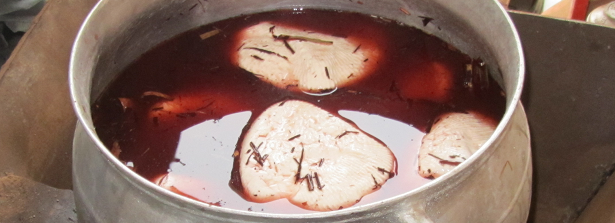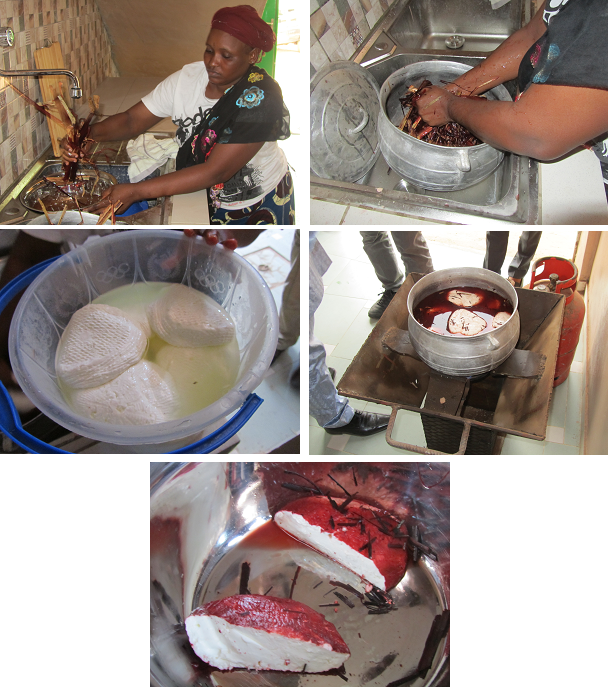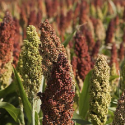News update on dye sorghum cultivation in Benin

Rob Nout and Anita Linnemann of Wageningen Food Quality and Design are visiting Benin in the context of the ARF project “Promoting dye sorghum cultivation”. They were given a demonstration about the traditional use of sorghum bio-colorant for colouring local cheese (“wagashi”).
This ARF project “Promoting dye sorghum cultivation to improve livelihoods in rural Benin in a context of climate change (Dyegrain)” addresses the commercial production of dye sorghum and the processing of its bio-colorants and grain in order to improve rural livelihoods in Benin.
The natural red dye extracted from the leaf sheaths of sorghum, a cereal that is grown in areas that are too dry for corn, has been used traditionally for a long time for, among other things, colouring local cheese. The process consists of: first washing the leaf sheaths, then crushing them in warm water, putting the (white) cheese (locally known as “wagashi”) in it and finally putting it on a fire until everything is boiling. In Europe there is interest in this dye because it may be a natural substitute for the artificial red dyes that are currently used in food.







